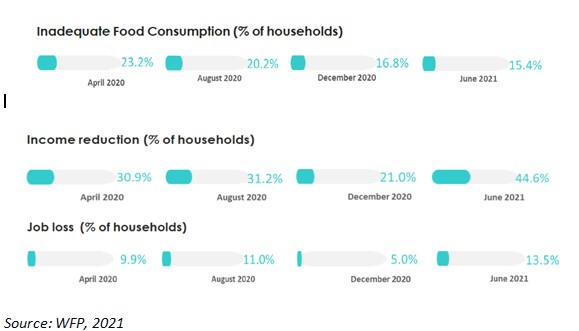The agencies concerned can enlist help from the Community Forestry Executive Committee to facilitate the smooth delivery of health support to the needy population. The district-level FECOFUN can also coordinate and cooperate with district-level health centers for medical rescue of the infected people.
Prompt responsiveness to disasters, whether they are natural or man-made, is what helps contain them. It may take government agencies longer to grapple with disasters like COVID-19. This is where the role of civil society like Community Forestry User Groups (CFUGs) comes into play, as these groups have access to masses of people to help them during such a worse situation. To illustrate, CFUGs played impressive roles in Nepal in responding to the 2015 earthquakes. Similarly, when there was no local government body in the country, CFUG was the only institution to rely on for tackling the multifaceted issues in society. More than 20,000 CFUG offices were the place where people would gather with the hope of resolving almost all types of disputes. As of now, there are more than 22,266 CFUGs across the country, the vast majority of which are affiliated with a nationwide network called the Federation of Community Forestry User Group (FECOFUN).
As is the case with other parts of the world, COVID-19 is an unprecedented disaster in Nepal, which has had daunting effects on every aspect of human life including health, economy, and migration. The disease has its worst impact on the healthcare system. People lost their lives due to the insufficiency of ventilators and oxygen supply. The post-COVID trauma in people may stretch to the next couple of years, with mental and physical health complications among people.
Cementing Nepal's International Trade

The pandemic has had profound implications on increasing the existing inequalities in society. It has threatened people’s access to food with a disrupted supply chain, which has challenged SDG Goal 2- zero hunger. International and local migration has been severely affected by the COVID-19. The pandemic has not only posed threats to the migrants in terms of job losses and reduction in work hours but also halted the migration of a large number of aspirant migrants. Such a situation in labor mobility has impacted the socio-economic sphere. The loss of income and jobs due to the COVID-19 crisis further affected household food security by decreasing food consumption.

The government needs to take immediate action to reinstate affected people from the shock of the pandemic. However, current political leadership has not taken an adequate move in that direction. Against this backdrop, the civil society’s role comes into play. The CFUGs have detailed demographic as well as socio-economic information, with identified poor populations through well-being ranking. The information can be best utilized to prepare a COVID-19 Preparedness and Response Plan. The agencies concerned can enlist help from the Community Forestry Executive Committee to facilitate the smooth delivery of health support to the needy population. The district-level FECOFUN can also coordinate and cooperate with district-level health centers for medical rescue of the infected people.
The vulnerable section of society can be rehabilitated within the CFUGs by providing jobs in forest management activities such as seedling production, plantation, and other forestry operations. In addition, the CFUG funds can serve as the safety-net to reintegrate the marginalized section of society. For instance, Popular Gentle and his colleagues published data in a research article in October 2020, which revealed that 252 CFUGs contributed around $170,000 to the COVID-19 response including about 10 million USD deposit to the local government's relief fund directly reaching out to over 152,700 poor and vulnerable people. The contribution can be enlarged in the future by further strengthening the pre-existing access and infrastructure of CFUGs across the country. Since the CFUGs are registered and legally functioning autonomous entities, the government can rely on collaboration with them to alleviate the COVID-19 pandemic now and the aftermath of the crisis.
In the wake of the outbreak of COVID-19 and its devastating impact on the lives of people who are at the grassroots, CFUG can address the problems facing these disadvantage groups at its earliest possible. The CFUGs and government agencies can act with one accord to combat the severe impact brought about by COVID-19.
(The author is Chief of Ratuwamai Afforestation Project, Jhapa and can be contacted at [email protected])



































